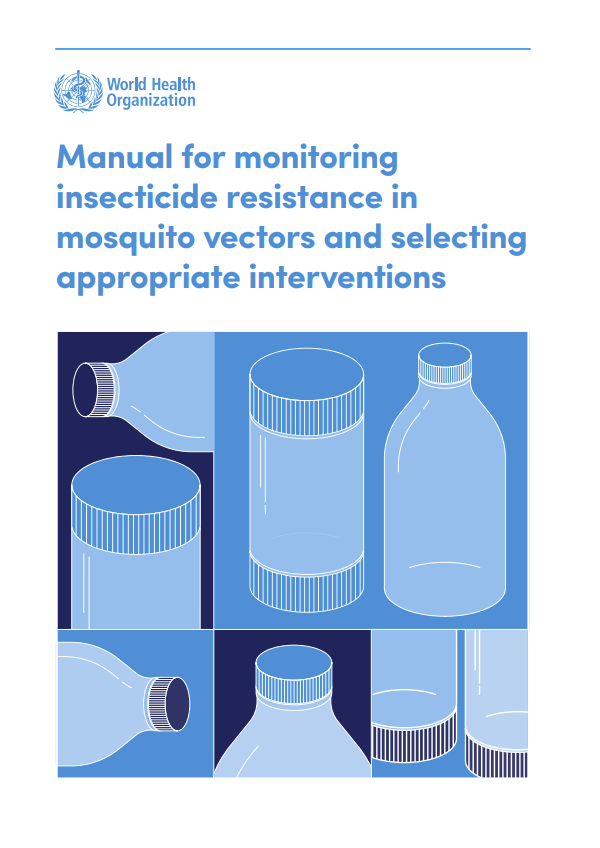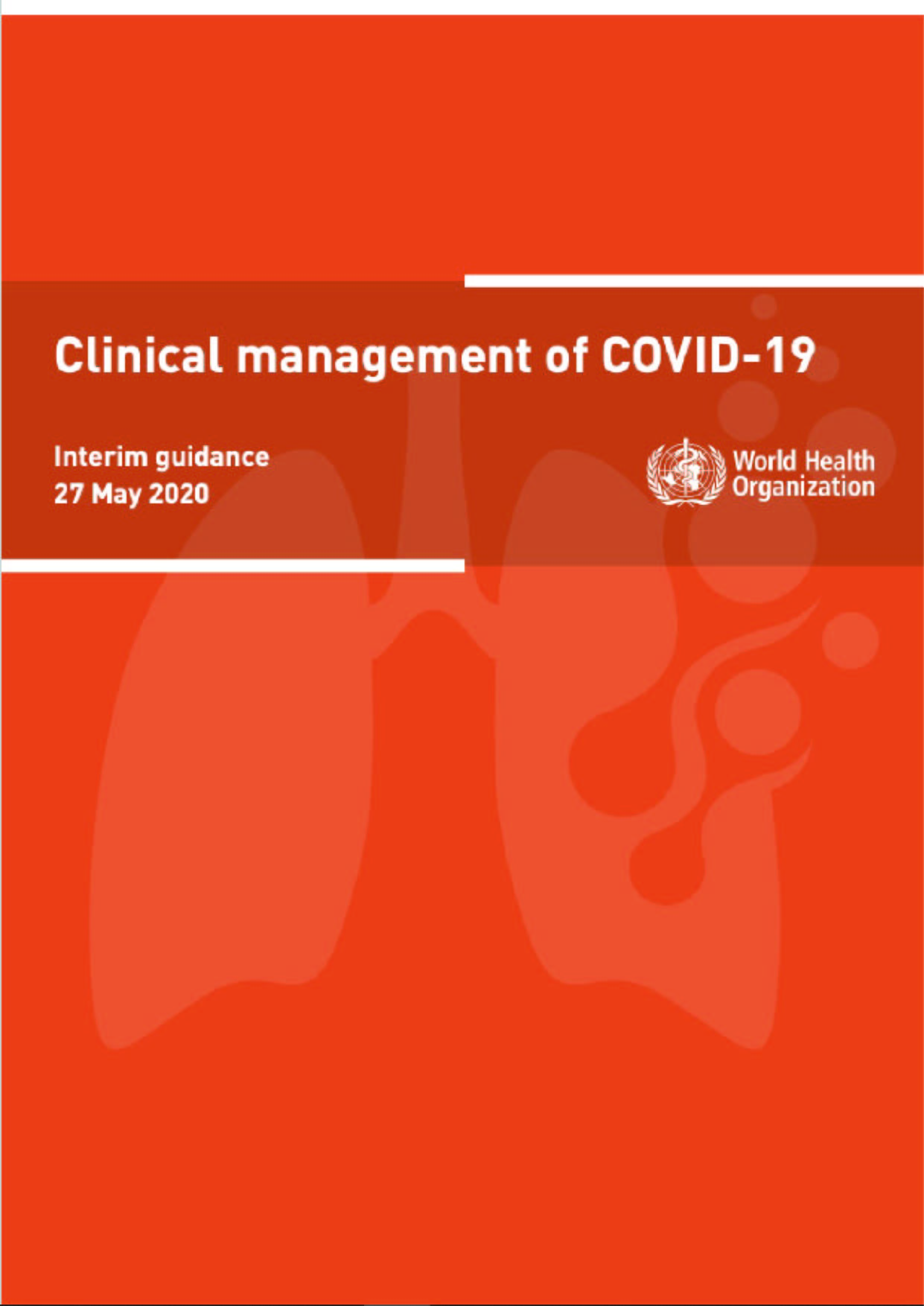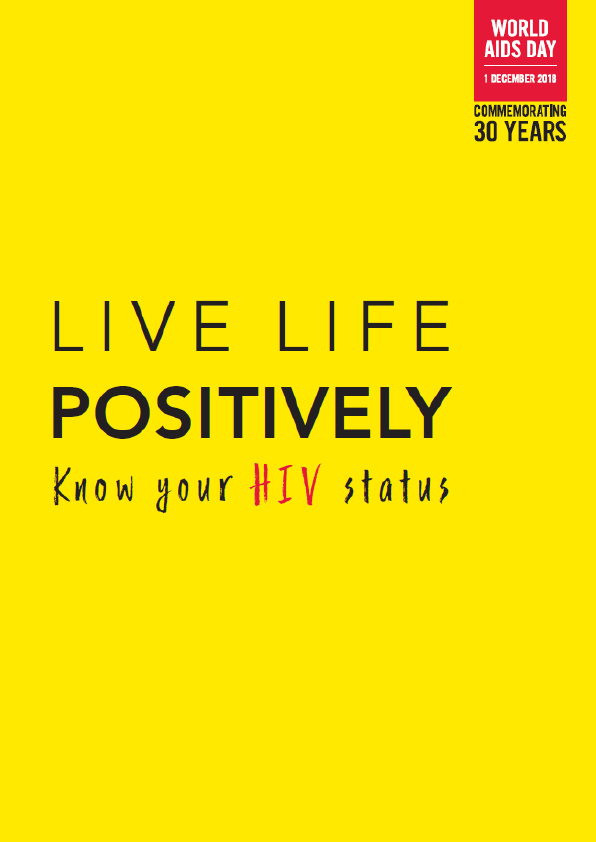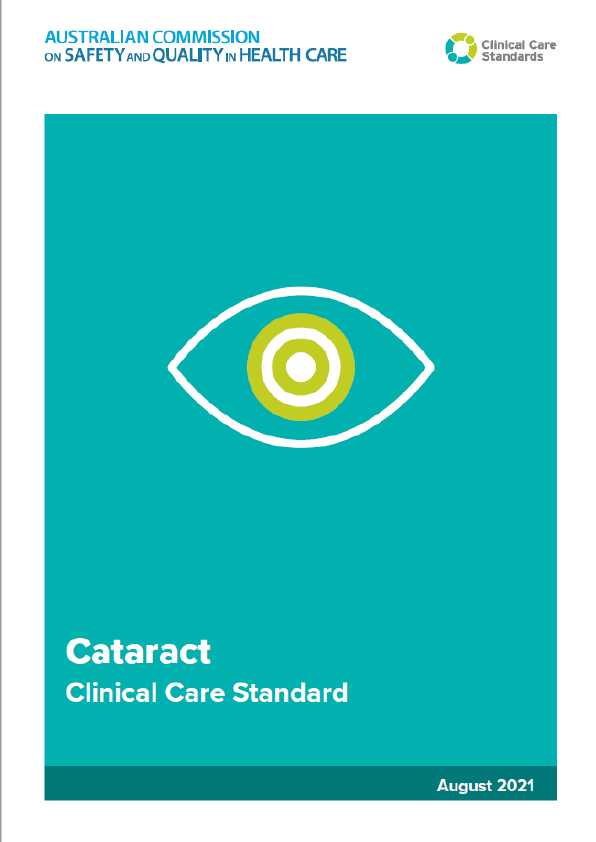Manual for monitoring insecticide resistance in mosquito vectors and selecting appropriate interventions
Vector-borne diseases are major causes of sickness, disability, and death worldwide. More than 80% of the world’s population lives in areas with the transmission of one or more of these diseases. The main vector-borne diseases are malaria, dengue, chikungunya, leishmaniases, Chagas disease, human African trypanosomiasis, lymphatic filariasis, onchocerciasis, Zika virus disease, yellow fever, Japanese encephalitis, and schistosomiasis. These diseases are caused by parasites, bacteria, or viruses that are transmitted to humans by various vectors: mosquitoes, sandflies, fleas, ticks, lice, triatome bugs, blackflies, and tsetse flies, and snails.
This document provides guidance on how to assess insecticide resistance in mosquito vectors and is aimed at field entomologists and biologists within ministries of health or partner institutions. It is also directed at program managers and others in charge of designing and implementing vector control strategies who need to draw on resistance data to inform their decisions. Lastly, it can help researchers and the pesticide industry to assess, in a standardized way, vector resistance to compounds used in existing and new vector control products.
It supersedes the “Test procedures for insecticide resistance monitoring in malaria vector mosquitoes, 2nd ed.” published in 2016.
Vector control plays a key role in reducing the burden of these diseases. Prevention of diseases for which vaccines or treatments (either prophylactic or curative) are not available relies heavily on vector control. For diseases for which treatments are available, such as malaria, vector control remains the most widely used prevention strategy and has historically led to the greatest reductions in disease burden.
Insecticides are the most widely used and effective vector control interventions. They are delivered through insecticide-treated nets (ITNs) and indoor residual spraying (IRS), as well as through supplementary interventions such as larviciding or space spraying. Currently, nine classes of chemical insecticides are used in vector control products prequalified by the World Health Organization (WHO) for public health use: pyrethroids, carbamates, organophosphates, organochlorines, neonicotinoids, pyrroles, butenolides, juvenile hormone mimics and spinosyns.
Traditionally, ITNs have relied solely on pyrethroids; pyrethroids, carbamates, organophosphates and organochlorines have been widely used for IRS; organophosphates, juvenile hormone mimics and spinosyns have been used for larviciding; and pyrethroids and organophosphates have been used for space spraying.
Neonicotinoids and butenolides are used in vector control products prequalified by WHO since 2017. They are IRS products containing a neonicotinoid (clothianidin alone or in a mixture with a pyrethroid), and space spray products with a mixture of a pyrethroid and a neonicotinoid (imidacloprid) or a butenolide (flupyradifurone). ITNs containing a pyrrole (chlorfenapyr) or a juvenile hormone mimic (pyriproxyfen) in combination with a pyrethroid were prequalified in 2018 and 2019, respectively, although WHO recommendations for their deployment in vector control are pending until their epidemiological impact has been demonstrated.
As a result of the wide use of insecticides for disease vector control and in agriculture, mosquito resistance to insecticides in four classes traditionally widely used for vector control – organophosphates, carbamates, pyrethroids and the organochlorine dichlorodiphenyltrichloroethane (DDT) – has emerged in major disease vectors and spread across all regions of the world (3–6). The status of vector resistance to newer insecticides contained in WHO prequalified vector control products – neonicotinoids, pyrroles, butenolides and spinosyns – is unknown because no standard test procedures and discriminating concentrations (DCs) have been available to monitor resistance to these compounds. However, resistance to these compounds is likely to develop as their use is scaled up, or may already be present as a result of the selection pressure exerted by their use in agriculture or as a result of cross-resistance with insecticides in other classes.
Resistance is caused by the evolutionary selection of specific genetic mutations in mosquitoes that allow them to survive exposure to insecticides. At present, the best understood mechanisms of resistance are:
• target site mechanisms, which are modifications of the molecular target site of the insecticide in the insect body (i.e. mutations in the voltage-sensitive sodium channel gene, known as “kdr” mutations); and
• metabolic mechanisms, which are an increase in the activity of insecticidedetoxifying enzymes within the insect body (i.e. cytochrome P450 monooxygenases, esterases, carboxylesterases and glutathione S-transferases).











